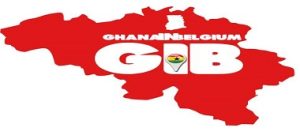
The Ghana Statistical Service (GSS), in collaboration with the Ministry of Food and Agriculture (MOFA), is conducting a nationwide household survey on Comprehensive Food Security and Vulnerability Assessment (CFSVA).
The World Food Programme (WFP) and the Food and Agriculture Organisation (FAO) are providing funding and Technical support for the conduct of the survey. Food security is a complex phenomenon resulting from multiple causes, including food availability, food accessibility, food utilization and food stability.
The Ministry of Food and Agriculture estimates that about five (5) percent of Ghana’s population (1.2 million people) are food insecure nation-wide, which means any unexpected natural or man-made shock will greatly affect the pattern of their food consumption (Ghana SDG Baseline Report, June, 2018).
The first Comprehensive Food Security and Vulnerability Assessment (CFSVA) survey was conducted in Ghana in 2009. Data analysis was done at the regional level for the then 10 existing regions. In 2012, a follow up of the CFSVA survey was conducted in the Upper West, Upper East and Northern (now Savannah, Northern and North regions) regions to identify the districts that were worse off.
This further investigation and analysis in the then three northern regions at the district level became necessary when it was found that they were the regions with households who were severely food insecure. It is heartwarming to inform stakeholders and the general public that, the 2020 CFSVA is a nationwide survey collecting data in all the 260 Metropolitan, Municipals and Districts in the country and therefore, district level data analysis is assured to aid the measuring of district level indicators and enable district scores in terms of food insecurity.
Training of field data collectors was held in Tamale, Sunyani, Kumasi, Ho and Winneba between 3-6 November, 2020, where nearly 900 personnel were trained. Eight Hundred and One (801) of the trained personnel have been deployed to the field for data collection commencing Monday 9th November, 2020 and expected to be completed by the first week in December, 2020.
Each district has a team of data collectors made up of three (3) members. Field data collection is being done with Computer Assisted Personal Interview (CAPI). This will facilitate data validation, data editing and data analysis. Therefore, it is expected that the results of the survey will be shared with stakeholders and the general public by the end of March, 2021.
The general objective of the 2020 CFSVA seeks to provide a framework for the implementation and monitoring of food and nutrition interventions in Ghana. The data that will be generated will provide the basis for reviving the quarterly Food and Nutrition Monitoring System – which provides quarterly food security situations by analyzing the key underlying factors of food security or insecurity that will be identified through the CFSVA.
The 2020 CFSVA, as part of its objectives will also monitor and assess the impact of the novel Corona Virus/COVID-19 pandemic on food security in Ghana by determining the food security status of the poorest segments of the population following the effects of the partial lockdowns.
Specifically, the CFSVA survey will:
1. Identify who the food insecure and vulnerable people are in the country, where they live, how many they are, why they are food insecure/vulnerable, what can be done to save their lives and livelihoods, how the situation is likely to evolve, and the risks associated with them.
2. Identify areas of food insecurity thereby targeting the neediest, informing preparedness and developing contingencies in addressing associated risks.
3. Provide up to date information on Ghana’s food security status, update the previous CFSVAs conducted in 2009 and 2012.
4. Provide a baseline for the SDG 2 progress tracking to the Government and improve targeting of Food and Nutrition Security and Social Protection programmes.
5. Provide information for planning government’s response in connection with humanitarian targeting and action, especially risks related to COVID-19 and floods. The CFSVA will help to map-out areas (national and regional districts) and people who are moderately or severely food insecure in Ghana and analyse the underlying causes of food insecurity.
6. Address the weak and unbalanced evidence used in formulating Food and Nutrition Security and Social Protection policies and programmes as well as poor geographical/location targeting.
The questions being asked in the survey are categorized into 12 broad sections
Section 1: Demographics and Education
Section 2: Migration
Section 3: Housing, facilities and assets
Section 4: Food consumption
Section 5: Household expenditure
Section 6: Coping strategies
Section 7: Agriculture and Access to markets
Section 8: Agricultural working inputs
Section 9: Income sources and expenditure
Section 10: Shocks, risks and Covid-19
Section 11: Minimum Diet Diversity (for female aged 15-49 years)
Section 12: Infant and young child feeding (IYCF) practices
The success of the field data collection will largely depend on the fullest cooperation of the general public who will be responding to the questions. We therefore, request for your patience in providing the field officers the right answers that are reliable for planning and strategic interventions.
Thank you.
Peter Takyi Peprah
Project Coordinator, 2020 CFSVA









